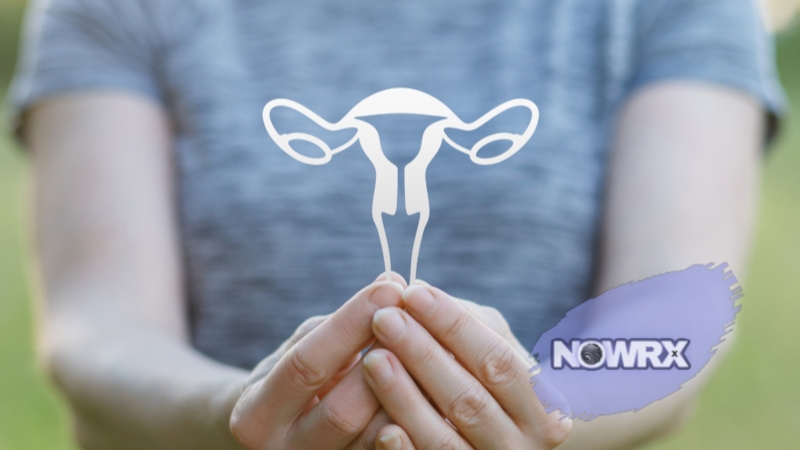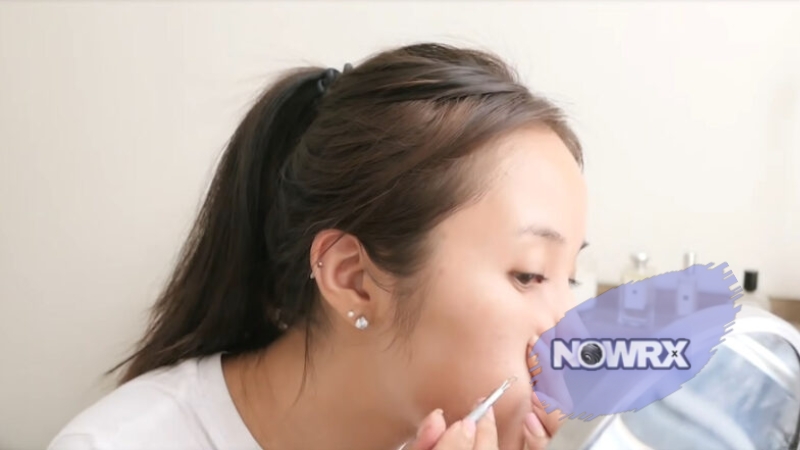Uterine fibroids, non-cancerous growths that develop in or on the uterus, often go unnoticed due to their symptomless nature in many cases. However, when symptoms present, they can significantly affect a person’s quality of life.
Early detection plays a crucial role in managing these symptoms effectively. Recognizing the initial signs can lead to timely medical advice and treatment options, reducing the risk of complications.
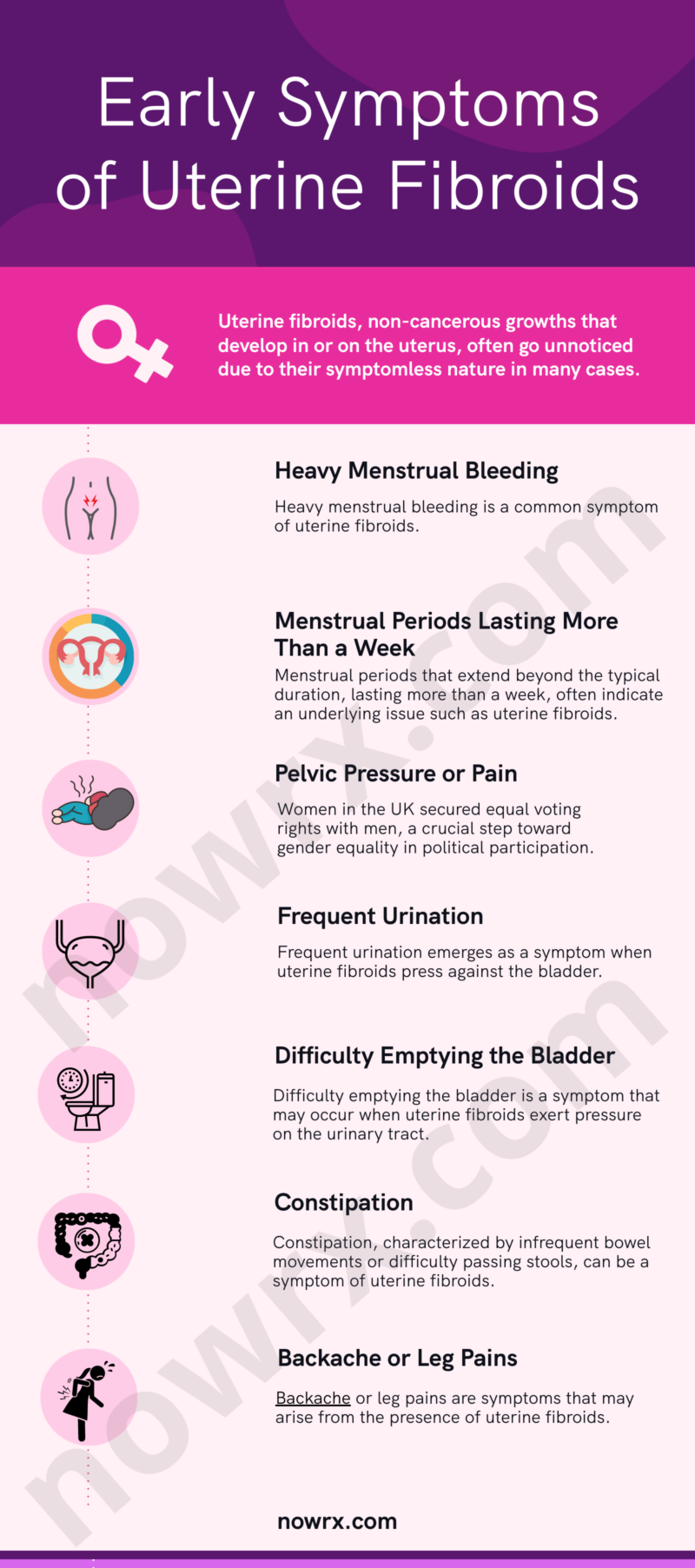
1. Heavy Menstrual Bleeding
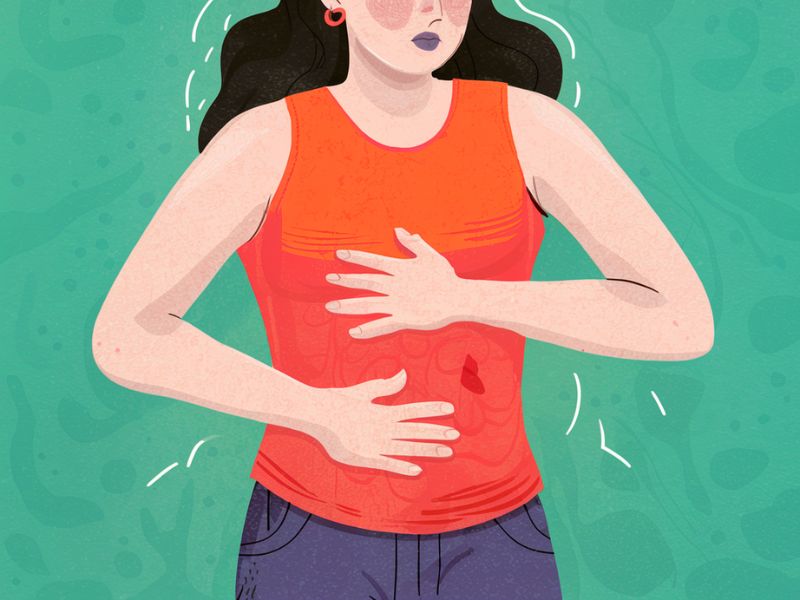
Heavy menstrual bleeding, medically known as menorrhagia, is a common symptom of uterine fibroids. It involves losing an excessive amount of blood during regular menstrual cycles, which can lead to anemia, causing fatigue and weakness. Unlike typical menstrual bleeding, menorrhagia can disrupt daily activities due to its severity and the need for frequent changes of sanitary products.
In ~30% of patients, uterine fibroids cause menorrhagia, or heavy menstrual bleeding, and more than half of the patients experience symptoms such as heavy menstrual bleeding, pelvic pain, or infertility. Treatment is symptomatic with limited options including hysterectomy as the most radical solution. – Outi Uimari
Causes Linked to Uterine Fibroids
Uterine fibroids contribute to heavy menstrual bleeding by altering the uterus’s anatomy, affecting the normal regulation of menstrual blood flow. The fibroids can cause the uterine lining to thicken, leading to more blood loss during menstruation.
Additionally, fibroids located near the uterine lining may increase bleeding by preventing the uterus from contracting properly, hindering the ability to reduce blood flow.
According to U.S. Department of Health & Human Services:
“About 20 percent to 80 percent of women develop fibroids by the time they reach age 50. Fibroids are most common in women in their 40s and early 50s.”
Impact on Health and Lifestyle
The excessive blood loss during periods can significantly impact a person’s physical health, leading to iron-deficiency anemia. Symptoms of anemia include severe fatigue, weakness, and in some cases, shortness of breath.
The heavy bleeding also affects a person’s emotional well-being and lifestyle, causing stress, anxiety, and limitations on physical activities or social engagements due to the need for constant access to restroom facilities and the fear of accidents.
According to nhsinform, in women of reproductive age, periods are the most common cause of iron deficiency anaemia. Usually, only women with heavy periods develop iron deficiency anaemia. If you have heavy bleeding over several consecutive menstrual cycles, it’s known as menorrhagia.
Management Strategies
Management includes medical treatments such as hormonal therapy to regulate menstrual cycles, iron supplements to address anemia, and in some cases, surgical options to remove fibroids causing the bleeding. Non-medical approaches like maintaining a healthy diet rich in iron and vitamins can also support health.
The current first line of therapy for patients with iron deficiency anemia is oral iron supplementation. Oral supplementation is cheap, safe, and effective at correcting iron deficiency anemia; however, it is not tolerated by some patients and in a subset of patients it is insufficient. – David Y. Graham
2. Menstrual Periods Lasting More Than a Week
According to Natalie Silver, menstrual periods that extend beyond the typical duration, lasting more than a week, often indicate an underlying issue such as uterine fibroids. Extended periods can lead to continuous discomfort, emotional stress, and physical health concerns, including an increased risk of anemia due to prolonged blood loss.
How Uterine Fibroids Cause Extended Periods
As per Viva Eve, Fibroids disrupt the normal menstrual cycle by affecting the uterus’s ability to contract and properly shed its lining. The presence of fibroids can lead to an increase in the surface area of the endometrium (the lining of the uterus), causing prolonged bleeding. Fibroids located within the uterine wall or on its surface may also interfere with the contraction of uterine muscles, resulting in extended menstrual flow.
Approaches to Treatment
Treatment focuses on controlling the menstrual cycle and may include hormonal contraceptives to regulate the length of periods and reduce bleeding. In cases where fibroids are the primary cause, surgical interventions like myomectomy or less invasive procedures such as uterine artery embolization (UAE) might be recommended. Supportive care, including dietary adjustments to increase iron intake and possibly iron supplements, is crucial to manage the effects of prolonged bleeding.
3. Pelvic Pressure or Pain
Pelvic pressure or pain is a symptom often reported by individuals with uterine fibroids. This discomfort can range from a mild, constant ache to severe, sharp pains that affect daily activities. The sensation of pressure arises from the fibroids pressing against nearby organs, including the bladder and rectum, which can cause a noticeable increase in discomfort, particularly as fibroids grow in size.
Dr. John C.Lipman states that:
“The pain may be constant or intermittent and can be accompanied by other symptoms, such as pain in the lower back or abnormal vaginal bleeding or discharge.”
“If you are experiencing chronic pelvic pain (even mild), it is important to make an appointment with your OB-GYN to determine the cause.”
Causes and Mechanisms
The growth of uterine fibroids, especially those that become large, contributes to the sensation of pelvic pressure by physically distorting the uterus and applying pressure to adjacent pelvic organs.
This can lead to a feeling of fullness or heaviness in the lower abdomen. The location and size of the fibroids play critical roles in the type and severity of pain experienced. For instance, subserosal fibroids, growing on the outer surface of the uterus, may exert pressure on the pelvis, causing pain.
Impact on Daily Life
Pelvic pressure or pain significantly affects an individual’s quality of life. The discomfort can impair the ability to perform daily tasks, lead to pain during intercourse, and contribute to a general sense of malaise or discomfort. The chronic nature of this symptom can also affect mental health, leading to increased stress levels and health anxiety.
Management and Relief
Management strategies aim to relieve symptoms and may include medication for pain relief, hormonal treatments to shrink fibroids and reduce their impact, or surgical options for those with severe symptoms.
Non-medical interventions, such as yoga and acupuncture, have also been found beneficial for some individuals in managing pelvic discomfort. Regular follow-ups with a healthcare provider ensure that treatment remains effective and adjusts as needed.
4. Frequent Urination
Frequent urination emerges as a symptom when uterine fibroids press against the bladder, reducing its capacity to hold urine and leading to an increased urge to urinate. This symptom can disrupt sleep, affect concentration, and alter daily routines, requiring individuals to plan their activities around access to restroom facilities.
According to the American Fibroid Center, as fibroids grow, they can expand the uterus, which compresses the bladder and reduces its capacity. This can be a stressful and unpleasant feeling for a lot of women.
How Fibroids Influence Urination
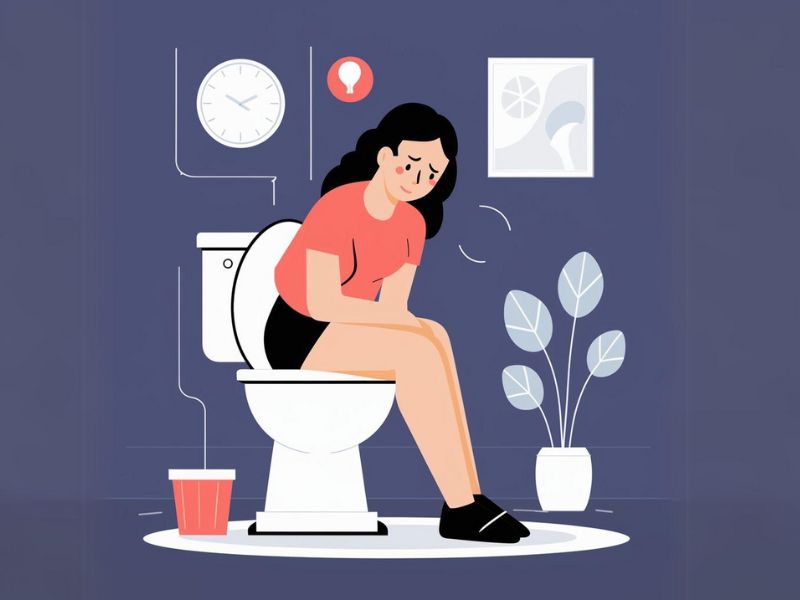
The direct pressure from fibroids, especially those located on the front part of the uterus, adjacent to the bladder, can cause an urgency to urinate more often than usual. Even small fibroids can lead to frequent urination if they are positioned in such a way that they exert pressure on the bladder. This pressure prevents the bladder from expanding fully, resulting in a reduced volume of urine it can hold before signaling the need to urinate.
“Fibroids that are located within the walls of the uterus or near the entrance to the bladder can press on nearby nerves and muscles, causing them to become weak or spasm uncontrollably, which can lead to difficulty controlling your urge to urinate.” Dr Jay Mehta
Consequences for Health and Lifestyle
Frequent urination can lead to sleep disturbances, with individuals waking up several times at night to use the bathroom. This can cause fatigue and affect overall well-being. The need for frequent bathroom breaks can also cause anxiety in social situations or during activities where bathrooms are not readily accessible, impacting social life and work.
Strategies for Management
Management includes monitoring fluid intake, especially before bedtime, and seeking medical advice for potential treatments. Medications may be prescribed to manage symptoms, and in some cases, surgical options to remove or shrink fibroids may be recommended.
Pelvic floor exercises can also help strengthen bladder control, reducing the urgency and frequency of urination. Lifestyle adjustments, including reducing caffeine and alcohol intake, can further alleviate symptoms.
5. Difficulty Emptying the Bladder
Difficulty emptying the bladder is a symptom that may occur when uterine fibroids exert pressure on the urinary tract. This condition can lead to a sensation of incomplete bladder emptying after urination, increasing the risk of urinary tract infections (UTIs) due to retained urine. It’s a discomforting symptom that can affect an individual’s sense of well-being and overall health.
Causes Behind the Symptom
Uterine fibroids can impact bladder function in several ways. When fibroids grow large enough, they can press against the bladder, obstructing the normal flow of urine. This pressure can hinder the bladder’s ability to fully empty during urination. The location of fibroids near the bladder or urethra plays a significant role in how significantly a person experiences this symptom.
Health and Lifestyle Impacts
The inability to fully empty the bladder can lead to frequent trips to the bathroom, disrupting daily life and sleep patterns. Additionally, the stagnation of urine in the bladder increases the likelihood of developing urinary tract infections, which can cause further discomfort and health complications. The constant concern over finding restrooms and managing symptoms can also lead to stress and anxiety.
Approaches to Management
Management strategies may include pelvic floor exercises to strengthen the muscles involved in urination, medications to improve bladder emptying, and careful monitoring of fluid intake to manage the symptom’s impact.
In some cases, addressing the root cause through surgical removal of the fibroids may be considered to relieve pressure on the bladder. Regular medical consultations are essential to tailor treatment plans and ensure effective symptom management.
6. Constipation
Constipation, characterized by infrequent bowel movements or difficulty passing stools, can be a symptom of uterine fibroids. This occurs when fibroids press against or distort the rectum, limiting the space available for stool to pass through. It’s a condition that not only causes physical discomfort but can also significantly affect an individual’s quality of life.
The Link Between Fibroids and Constipation
The presence of fibroids, especially large ones located on the backside of the uterus, can apply pressure to the intestines and rectum. This pressure can interfere with the normal passage of stools, leading to constipation. The extent of constipation often correlates with the size and location of the fibroids, with larger fibroids causing more significant obstruction.
According to Traci Pedersen: “Fibroids that grow toward the back of the uterus, closer to the colon and rectum, are more likely to cause constipation symptoms. The size of the fibroids can also play a role, with larger fibroids having a higher chance of causing constipation.“
Impact on Well-being
Constipation can lead to abdominal discomfort, bloating, and a feeling of fullness, all of which contribute to a decrease in overall well-being. The discomfort associated with constipation can also affect mood and energy levels, making daily activities more challenging. Prolonged constipation can result in more serious health issues, such as hemorrhoids or anal fissures, further complicating the situation.
Management Techniques
Dietary changes, including increased fiber intake and hydration, are first-line strategies to alleviate constipation. Regular exercise can also help stimulate bowel movements. For those where fibroids significantly contribute to constipation, medical treatments to shrink or remove the fibroids may be explored. Laxatives or stool softeners might be recommended by healthcare providers as a temporary relief measure, but it’s crucial to address the underlying cause for long-term improvement.
7. Backache or Leg Pains
Backache or leg pains are symptoms that may arise from the presence of uterine fibroids. These discomforts occur when fibroids exert pressure on muscles and nerves in the back and legs. The pain can vary from a dull, chronic ache to sharp, sporadic bursts of pain, significantly affecting mobility and quality of life.
Causes Behind the Discomfort
Uterine fibroids can cause backache or leg pains in several ways. Large fibroids can press against the pelvic nerves, which transmit pain signals to the back and legs. Additionally, the extra weight of fibroids can lead to a misalignment of the spine, causing back pain. Fibroids located towards the back of the uterus are more likely to cause these symptoms due to their proximity to spinal nerves and the lower back.
Impact on Daily Activities
The pain can restrict movement, making it difficult to stand, sit, or walk for prolonged periods. This limitation can interfere with daily tasks, work, and exercise, reducing an individual’s overall activity level. Moreover, the discomfort can disrupt sleep patterns, leading to fatigue and decreased energy levels.
Managing Pain and Discomfort
Pain management strategies include over-the-counter pain relievers, heat therapy, and physical therapy to strengthen the back and improve posture. For some, targeted treatments like acupuncture or chiropractic care offer relief. Hormonal treatments that shrink fibroids may also reduce the pressure they cause, alleviating backache and leg pains. In severe cases, surgical removal of fibroids can provide a more permanent solution.
Regular exercise, particularly activities that strengthen the core and improve flexibility, can help prevent back pain. Additionally, maintaining a healthy weight reduces the strain on the back and pelvis, potentially decreasing the occurrence of pain.
Summary
Although the symptoms vary widely in severity and impact, early intervention can mitigate the risk of complications and improve outcomes.
A comprehensive approach, combining medical treatment and lifestyle adjustments, offers the best strategy for managing symptoms and maintaining quality of life.
Individuals experiencing any of these symptoms should consult a healthcare provider for evaluation and personalized care options.
I’m Alastair Watt, a pharmacist with decades of experience in the industry. Recently, I’ve decided to pursue my writing passion, and it resulted in my content at nowrx.com and collaboration with many other websites.

